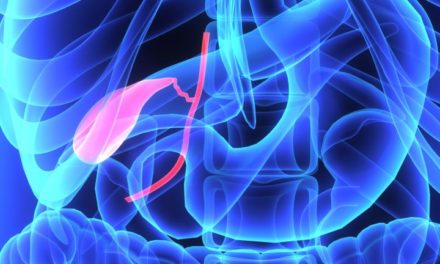
Vitamin A: Vitamin A is found in high concentrations in animal tissues, especially liver and in fish liver oil. Carotene, the precursor to vitamin A, it is water soluble and is found in carrots, spinach, beet greens and broccoli.
Vitamin A aids in the growth and repair of body tissues and helps maintain skin and mucous membranes. It also promotes the secretion of gastric juices. It is also necessary for the formation of visual purple, a substance in the eye which is necessary for proper night vision.
The upper intestinal tract is the primary area of absorption of vitamin A. Enzymes and bile salts convert carotene into a usable nutrient. The conversion is stimulated by thyroxin. Approximately one-third of carotene consumed in the diet is converted to vitamin A. Diabetics may not be able to convert carotene into vitamin A.
One of the earliest symptoms seen in vitamin A deficiency is night blindness. Xerosis is also common. The eyeball loses its luster, becomes dry and inflamed and visual acuity is reduced. Other signs of deficiency include rough, dry or prematurely aged skin; loss of sense of smell; loss of appetite; frequent fatigue; skin blemishes, sties in the eye and diarrhea. Also the hair loses luster and sheen, dandruff accumulates and fingernails become brittle. In severe deficiency there may be corneal ulcers and softening of the bones and teeth.
Vitamin A is valuable in fighting infections. It protects the mucous membranes against invading bacteria. It is useful for people with allergies or who are exposed to pollutants.
Approximately 90 percent of the body’s vitamin A is stored in the liver, with small amounts deposited in the fat tissues, lungs, kidneys and retinas of the eyes. Zinc is needed to mobilize vitamin A out of storage.
The RDA of Vitamin A, is between 1500-4000 IU for children and 4000-5000 IU for adults. Research indicates that no more than 50,000 IU per day can be utilized by the body, Therapeutic doses are generally between 25,000-50,000 IU.
Vitamin A can be toxic. Symptoms of toxicity include nausea, vomiting, diarrhea, dry skin, hair loss, headaches, appetite loss, sore lips, and flaky, itchy skin. Bone fragility, thickening of long bones, deep bone pain, enlargement of the liver and spleen, blurred vision and skin rashes are symptoms of prolonged excessive intake. It can also lead to reduced thyroid activity and excessive serum calcium.
Early findings of vitamin A toxicity are sparse, coarse hair, alopecia of the eyebrows, dry rough skin and cracked lips. Severe headache, pseudotumor cerebri and generalized weakness are prominent later. Cortical hyperostoses and arthralgia are common, especially in children. Excessive ingestion of carotene does not cause hypervitaminosis A, but produces high carotene levels that can cause carotenosis, which is asymptomatic. In carotenosis the skin (but not the sclera) become yellow, especially the palms and soles.
Normal plasma levels of vitamin A are from 20 to 50 mcg/100ml. In hypervitaminosis A, they may exceed 110 mcg/100ml and have been as high as 2000mcg/100ml. Prognosis in vitamin A toxicity is very good. Symptoms and signs usually disappear within one to four weeks after discontinuing the vitamin.
J Invest Dermatol 86:390-93, 1986 Following treatment with isotretinin, the inflammatory papules, pustules and nodules were curtailed, while the vasomotor lability and telangiectasia were unchanged.—Also in acne roseacia, r/o hypochlorhydra, malabsorption of vitamin B, Rx w/ HCl and B complex. Vitamin A has a reputation of being good for acne, since serum concentrations of retinol are decreased in patients. Supplementing with vitamin A is not very effective, except in near-toxic doses. Topically, it does seem to help.
Vitamin A supplementation does seem to help with eczema. Ann Allergy 10:703-4, 1952 Ten children with chronic eczema were given Vitamin A palmitate 25,000-200,000 IU daily for 3-21 months. 3 showed some improvement and 6 showed marked improvement. There was no evidence of toxicity. Worth noting, serum copper may be elevated in patients with eczema, so a combination of zinc and vitamin A may be worth taking.
Vitamin A deficiency is associated with anemia due to impaired hemoglobin synthesis, which is reversible with supplementation.
American Journal of Clinical Nutrition 46:531, 1987. In a group of 148 Iranians, Low plasma vitamin A levels were correlated with reduced hemoglobin values.
Nutr Res 10:267-73, 1990. Eight middle aged males gradually developed anemia several months after being placed on a vitamin A deficient diet. The decline in serum hemoglobin began well before the loss of night vision or the attainment of “deficient” serum vitamin A values. Supplementation with carotene or vitamin A led to normal values.
Med World News– Male physicians with a history of angina received beta carotene (50 mg/day) After several years of follow-up, compared to placebo controls, that group had a 54% reduction in major coronary events and a 54% reduction in major vascular events.
American Journal of Epidemiology, 1991; 133: 766-75. “Plasma Antioxidant Vitamins and Subsequent Cancer Mortality in 12-Year Follow-up of the Prospective Basal Study” Plasma levels of antioxidants (A<C<E and carotene) were measured in 2974 men over a 2 year period. Of this group, 204 men died of cancer. Overall mortality was associated with low levels of carotene and vitamin C.—lots of studies to this effect.
Cancer Letters, 1991; 59:25-29 “Anti-Tumor Effects of Vitamin A Against Shope Carcinoma Cells” Vitamin A (Retinol) caused morphologic changes and growth retardation in Shope carcinoma (cultured). Authors conclude that vitamin A may be effective against differentiated squamous cell carcinomas, but not against undifferentiated tumors.
Worth noting: Vitamin A has been used to reduce tumors and to prevent return of cancer.
The American Journal of Clinical Nutrition 1991; 53:90-4 “Effect of B-Carotene on Lymphocyte Subpopulations in The Elderly Humans: Evidence For a Dose-Response Relationship” Dosage of 30 mg/day (mean age of subject–56) for two months led to an increase in the percentage of lymphoid cells with surface markers for T-helper, natural killer cells and cells with interleukin II. B-carotene levels elevated significantly while retinol did not. . Very high B-carotene doses (180 mg/day) for two weeks increased total numbers to T-helper cells without affecting suppresser cells. B-carotene causes in vitro cytokine secretion. In the elderly subjects the singular elevation of T-helper cells without affecting suppresser cells is significant.
Am J Clin Nutr40:1090-95, 1984 Vitamin A deficiency is associated with increased susceptibility to infection.
Nutrition and Cancer, “Exposure to Benzopyrene Depletes Tissue Vitamin A: B-Carotene Prevents Depletion”,1991; 208-210. Rats fed benzopyrene had tissue retinol in the liver and small intestine to reduce by 30%. Rats supplemented with B-carotene had no such depletion. Intake of B-carotene may have a positive impact on environmental carcinogens.
Nutrition Research, 1991; 11:549-558 “Effect of Vitamin A Prophylaxis on Morbidity and Mortality Among Children in Urban Slums in Bombay” Vitamin A give at an initial dose of 200,000 IU lowered the mortality rate and helped reduce the incidence of infections, diarrhea, measles, respiratory infections and parasite infections. Nutritional supplementation of vitamin A may reduce the fatality of measles.
Aust Paediatr J 22(2):95-99, 1986 147 preschool children with a history of frequent respiratory illness received 1500 IU vitamin A, or a placebo. After 11 mo., the supplemented children experienced 19% fewer episodes of respiratory symptomatology compared to controls, even though their plasma retinol levels did not change. Children with prior histories of lower respiratory illness or of allergy benefited most.
Arch Otorhinolaryngol 124:379-82, 1978 The cochlea has a high concentration of vitamin A and all special sensory receptor cells contain, or are functionally dependent upon vitamin A. Deficiency may be associated with inner ear dysfunction.
Arch Otorhinolaryngol 234:167-73 Young rats on vitamin A deficient diet had changes in the cuticle of the outer and inner hair cells of the cochlea.
Arch Otolaryngol May, 1951, pp515-26 249/300 patients (83%) with hearing loss had an average gain of hearing in the left ear of 18.9% and the right ear of 17.3% with very definite gains in hearing of conversational tones following a series of twice weekly IV injections of 2 cc of vitamin A.
Acta Obstet Gynecol Scand 39:586-92, 1960 (PMS) Patients given 2-300,000 IU/day, premenstrually or a placebo. All experimental subjects benefited, compared to only 25% of those on placebo.
Acta Obstet Gynecol Scand 39:586-92 (PMS) 218 patients given2-300,000 IU/day. 48% had complete symptom relief, 41.2% had a partial effect and 10.8% failed to improve. Results were best for premenstrual headache and worst for PMT-A.






